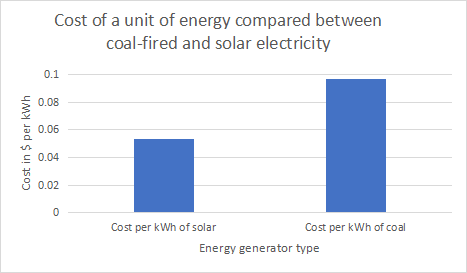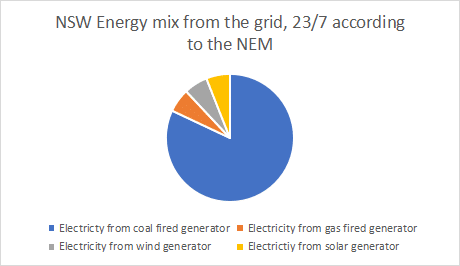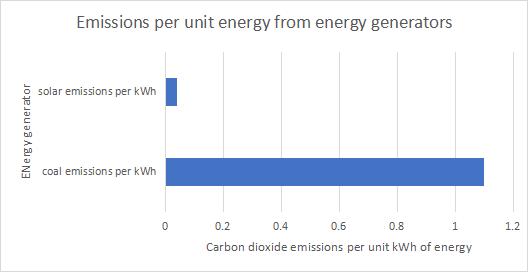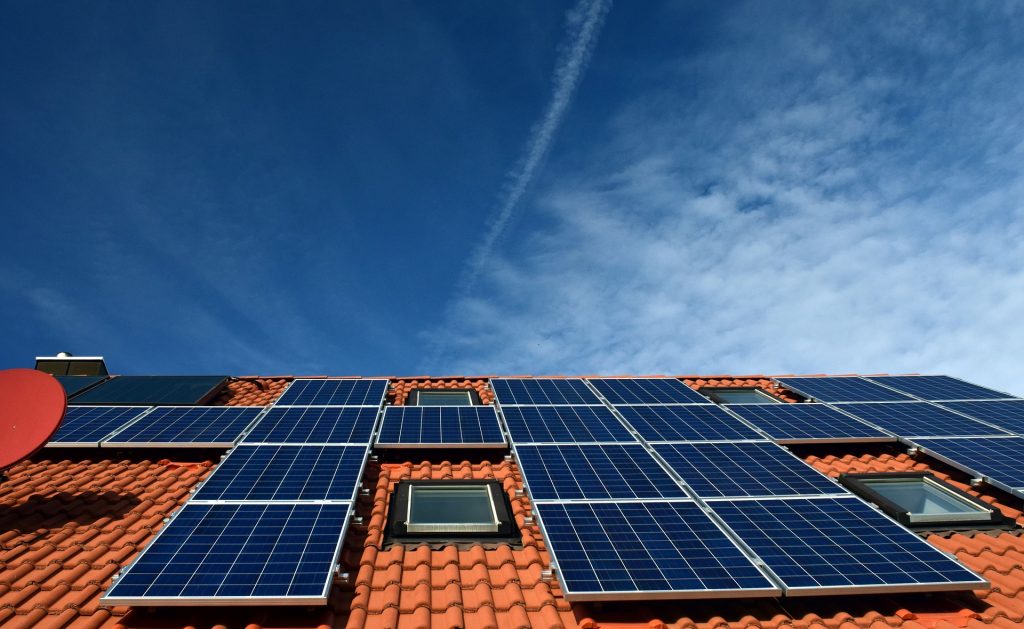Advantages Of Solar Energy To The Environment And For Your Wallet?
You might ask yourself, is electricity from solar panels really that ‘green’ and how does it compare with electricity from the grid? and the advantages of solar energy to the environment?
As this blog post shows, solar has high upfront costs and very low ongoing costs whereas electricity from coal and gas has medium ongoing costs as with fossil fuels the resource must be extracted and burnt, so from a mining point of view, it is an ongoing income source whereas with solar the energy from the sun is free.
Advantages of solar energy compared to coal and gas-fired electricity
When comparing solar with coal and gas-fired electricity, we see how over the long term the cost per unit of electricity is lower with solar than it is with coal and gas.
The term we are interested in here is the Levelized cost of electricity, which looks at the entire cost of the energy generating method, including the power station construction and maintenance costs, fuel costs and decommissioning cost, basically, all the costs that come with operating an electricity generator.
The wholesale cost of solar without storage in 2021 is lower than the wholesale costs of coal-fired generators in NSW, so when the sun is shining solar makes sense.
| Generator | Costs | Note |
| Coal | Equipment and labour in mining the coal | Recurring cost |
| Cost of transporting coal | ||
| Cost of constructing and maintaining a coal-fired generator | ||
| Cost of decommissioning a coal-fired generator | ||
| Gas | Equipment and labour in mining the gas | Recurring cost |
| Cost of transporting gas | ||
| Cost of constructing and maintaining a gas-fired generator | ||
| Cost of decommissioning a gas-fired generator | ||
| Solar/Wind | Cost of manufacturing the solar module, inverter and equipment | |
| Cost of transporting solar module and equipment | ||
| Cost of installing solar System | Once off cost | |
| Maintenance | ||
| Cost of decommissioning solar system |
Cost benefits of solar energy compared to coal-fired
According to the CSIRO, in 2018 the wholesale cost of solar electricity was 0.053 $/kWh whereas the cost of black coal-generated electricity was 0.0966 $ /kWh, which is the price electricity retailers pay for their energy which they on-sell to you, the end-user, so it can easily be seen that by using solar in the day time you are saving money.

If we look at the energy mix for the electricity grid in NSW on a July day we see the majority of the energy comes from coal, followed by gas, solar and wind.
So it can be seen that if a household relies solely on the grid electricity it uses a large amount of fossil fuel reliant electricity which incurs high ongoing costs compared with wind and solar which are mainly once-off costs with the installation.

Advantages of solar energy for the environment
Another advantage that comes with generating solar on the rooftop is a reduction in power losses and costs from the point of generation to the point of use. The costs of electricity that is used from the grid are made up of a number of cost factors
- Network distribution and transmission- 50-60%
- Generation of electricity for the wholesale market and retail sale 25-30%
- Environmental policies 10%
As the power is being consumed at the place of use, we call this distributed generation, so when solar power is consumed from your rooftop you are saving resources and money in two ways,
- 1. By reducing your electricity costs as you are using your own power
- 2. By reducing the demand on the network, meaning fewer upgrades on the network needed
If we want to compare how ‘green’ solar is compared to the electricity from the local grid we can look at what the emissions of carbon dioxide are from each energy source.
We see that solar has at least 20 times fewer emissions than carbon dioxide per unit of energy and so it is far more environmentally friendly
Coal fired electricity in Australia= 1.1 kg CO2 eq per kWh
Electricity from Solar in Australia = 0.02-0.04 kg CO2 eq per kWh

So in conclusion solar has less running costs than gas or coal-fired electricity from the electricity grid for most places in Australia and it also produces a fraction of the carbon dioxide pollution, meaning that solar is both good for your wallet and good for the planet!




 1300-713-998
1300-713-998